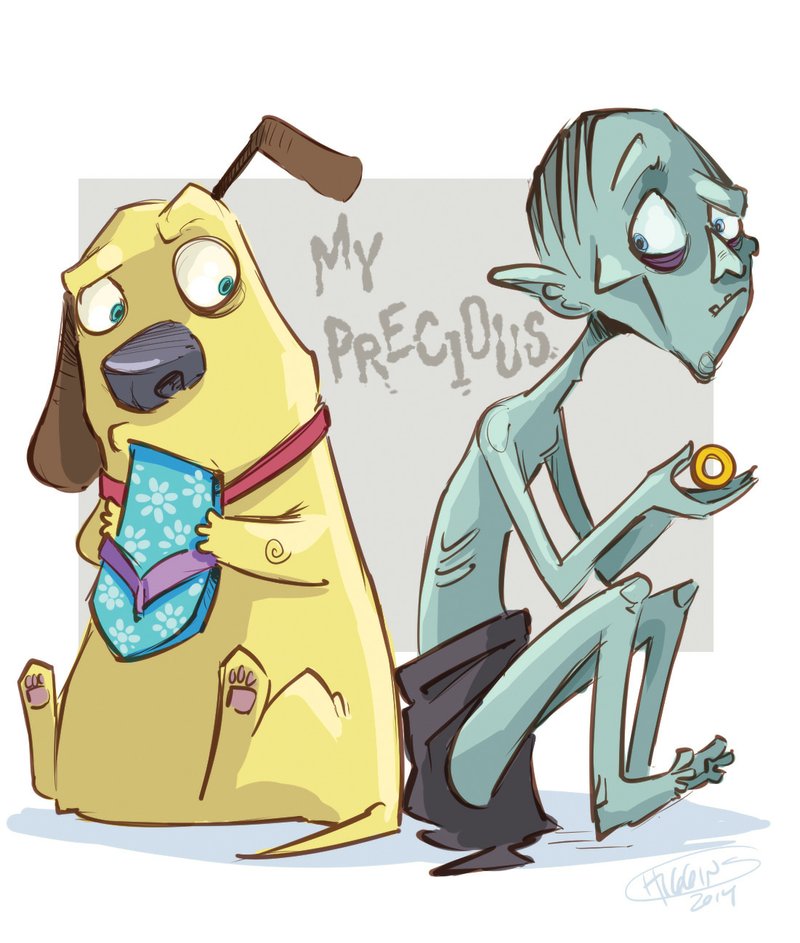I'm having trouble getting my dog to drop things she's not supposed to have, like my flip-flops. If I don't keep them on my feet, she'll grab one and won't give it back to me. How to I teach her to let go?
Even though it's not a lesson owners intend to teach, dogs learn quickly that if they give up something they consider precious -- and your flip-flop is indeed precious to your dog -- they may never get it back. Imagine them lamenting, like Smeagol in Lord of the Rings, "We wants it, we needs it. Must have the precious. They stole it from us."
When an owner takes away a prized item while scolding the dog for having it, the dog learns that when he voluntarily releases a precious find or his owner "steals" it away, the object is gone and never coming back. While that's the message the owner most likely wants to send, it's not a message that motivates dogs to happily or easily give things up. After a few times of having something taken away, a dog can't help but think like Smeagol -- "Tricksy, wicked, false" -- when a human says, "Give that to me."
The owner needs to send a different message, one that tells the dog that dropping the precious can literally be rewarding. The message is what trainers call the "drop it" command. There are several twists on teaching dogs to respond to "drop it," all involving some kind of reward. The reward most often is a food treat coupled with praise, but can also be a favorite toy or play time. The key is to let the dog know that giving up the precious item means getting something equally prized or even better.
One way to teach a dog to drop an object on cue without offering a food treat involves playing a game using two identical toys, according to thedogtrainingsecret.com. The dog learns the cue in the context of a game, which is more effective than trying to teach the lesson when the dog is holding onto a real treasure, like a shoe.
If the dog likes a particular squeaky toy, for example, buy a second one that's exactly like the first. During play time, give him one of the toys, then wait until he releases it. When that happens, say "Drop it," then immediately give him the second toy. When he drops the second toy, repeat the cue and hand him the first toy. Timing is critical to the dog making the connection between giving up the first item and receiving the second, so always keep the replacement toy in hand.
The dog will soon learn that spitting out a toy results in getting another one. After he's doing that consistently on his own, tweak the game by using the command before he drops the toy. After the command, wait for him to drop the toy before handing him the second one. When the game is over, reward the dog by letting him keep one of the toys.
Some dogs respond better to training with food treats, so try the same technique using a treat that's reserved only for the "drop it" sessions. Watch and wait for the dog to release a toy on his own before using the command and handing him a treat.
Again, when teaching by using positive reinforcement, timing is everything.
The dog needs to make the association on his own between the treat and letting something out of his possession. The realization can come after only a few repetitions or may take a several days; when it does, the dog may begin dropping things when he spies a treat in his owner's hand. If that happens, then reward him immediately while saying "drop it."
The final step is to ask the dog for the behavior before he offers it. After each training session, return the toy to the dog and say "take it." That gives him a second cue to follow while letting him know that his owner is neither "tricksy" nor false.
Family on 09/10/2014
